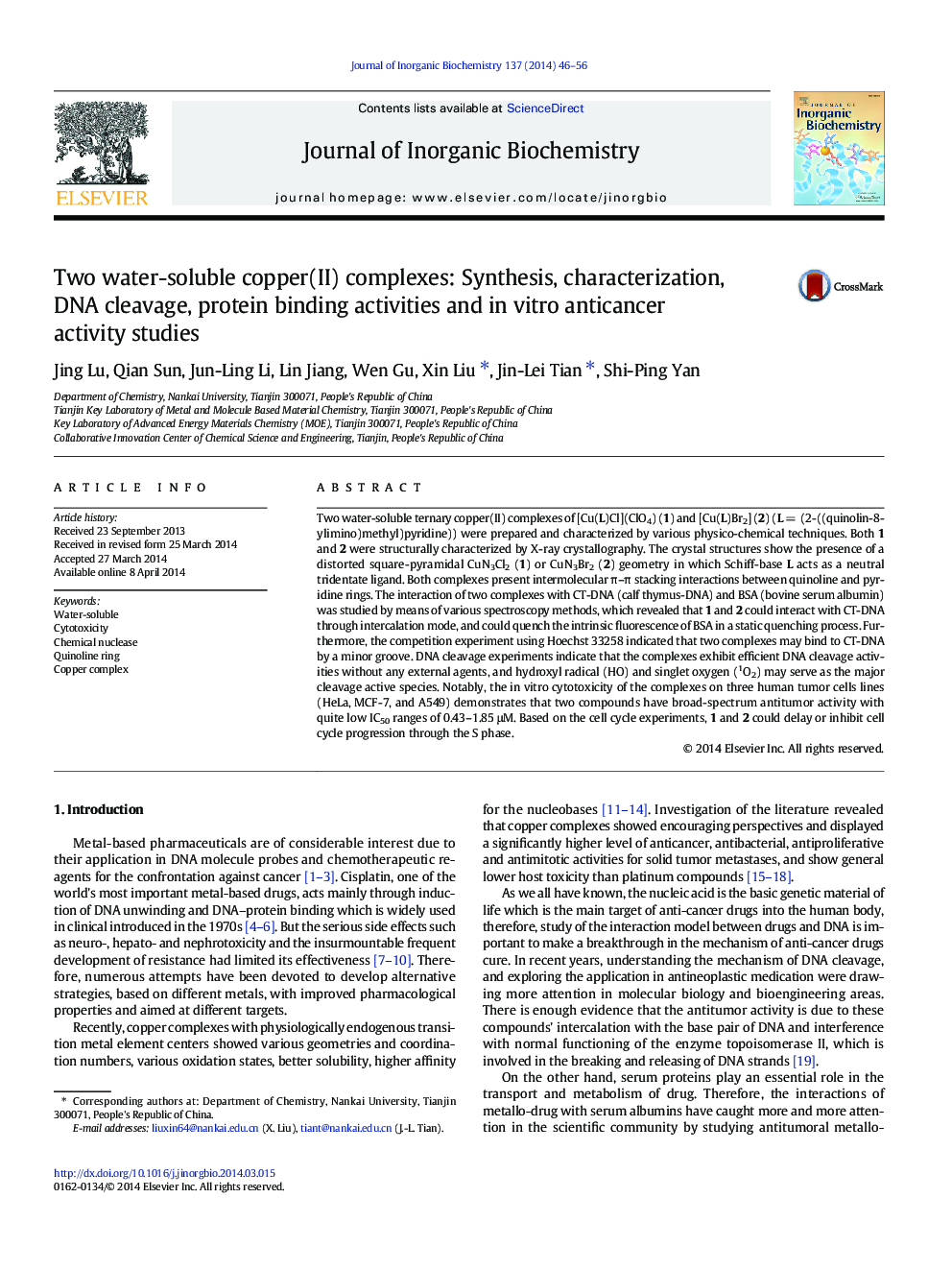| کد مقاله | کد نشریه | سال انتشار | مقاله انگلیسی | نسخه تمام متن |
|---|---|---|---|---|
| 1316709 | 1499450 | 2014 | 11 صفحه PDF | دانلود رایگان |

Two water-soluble ternary copper(II) complexes of [Cu(L)Cl](ClO4) (1) and [Cu(L)Br2] (2) (L = (2-((quinolin-8-ylimino)methyl)pyridine)) were prepared and characterized by various physico-chemical techniques. Both 1 and 2 were structurally characterized by X-ray crystallography. The crystal structures show the presence of a distorted square-pyramidal CuN3Cl2 (1) or CuN3Br2 (2) geometry in which Schiff-base L acts as a neutral tridentate ligand. Both complexes present intermolecular π–π stacking interactions between quinoline and pyridine rings. The interaction of two complexes with CT-DNA (calf thymus-DNA) and BSA (bovine serum albumin) was studied by means of various spectroscopy methods, which revealed that 1 and 2 could interact with CT-DNA through intercalation mode, and could quench the intrinsic fluorescence of BSA in a static quenching process. Furthermore, the competition experiment using Hoechst 33258 indicated that two complexes may bind to CT-DNA by a minor groove. DNA cleavage experiments indicate that the complexes exhibit efficient DNA cleavage activities without any external agents, and hydroxyl radical (HO) and singlet oxygen (1O2) may serve as the major cleavage active species. Notably, the in vitro cytotoxicity of the complexes on three human tumor cells lines (HeLa, MCF-7, and A549) demonstrates that two compounds have broad-spectrum antitumor activity with quite low IC50 ranges of 0.43–1.85 μM. Based on the cell cycle experiments, 1 and 2 could delay or inhibit cell cycle progression through the S phase.
The complexes exhibit efficient DNA cleavage activity without any external agents. They could quench the intrinsic fluorescence of BSA in a static quenching process.Figure optionsDownload as PowerPoint slide
Journal: Journal of Inorganic Biochemistry - Volume 137, August 2014, Pages 46–56